Bronze with medal and gilt patina, black and cherry marble
Dimensions: H. 33 (cm.)
Paris, circa 1860
Pair of spindle-shaped vases, resting on a base with a triple square elevation, alternating two shades of marble and gilding. The body of the vases is composed of double-sided decorations mixing lotus leaves and papyrus fans or the ostrich feathers composing the Atef or Tjeni crown. Two solar discs can also be distinguished at the base of each decoration. The handles are anthropomorphic and take up the features of the goddess Sekhmet with a lioness's head and the attributes of power; and openwork papyrus leaves as well as a caduceus in the lower part. The base of the neck is decorated with a frieze of palmettes and winged suns, attributes of the god Re.
Hébert and Servant This model is similar to the productions of the Servant house by the use of identical bases on many of their productions. Furthermore, this pair of vases corresponds completely to the range of works in the Egyptian taste that they offer, mainly on the drawings and sculptures of the talented Émile Hébert. Finally, the technical quality of the whole is remarkable: each assembly is marked by a centering plot, the adjustments are meticulous as are the assemblies with screw thread and square ''nut''. Georges Émile Henri Servant (1828 - 1890) succeeded his father in 1855 at the head of a foundry rue Vieille-du-Temple in Paris. He specialized in the production not only of neo-Egyptian fireplace fittings, then very popular in France, but also of furniture and decorative objects in the "neo-Pompeian" style. Already highly acclaimed by the public and critics for its high-quality bronzes at the Universal Exhibition in Paris in 1855, then at the London Exhibition in 1862, the Servant company exported up to a third of its production from this time on, mainly to the United States. His neo-Greek and Egyptian works earned him the gold medal at the Universal Exhibition in Paris in 1867, and it was in 1874 that he received his consecration, with his appointment to the rank of Knight of the Legion of Honor. At the 1878 World's Fair, Georges Servant, who was then a member of the Jury for the art bronzes class, nevertheless exhibited vases and small pieces of bronze furniture, which once again attracted general admiration. He finally took leave of absence from business shortly before the 1889 World's Fair. Emile Hébert studied sculpture with his father and the famous artist Feuchère. He exhibited at the Salon des Artistes Français between 1846 and 1893, as well as at the World's Fairs of 1855 and 1867, where he was awarded a gold medal for this clock and a pair of busts. He repeated his feat at the 1878 World's Fair, winning another gold medal for other Egyptian-style subjects. The Jury's report in 1878 did not fail to praise him: “Hébert's carving is masterfully executed and is highly appreciated by artists.” His Egyptian-style creations are among his most famous works, following the tradition of ethnographic decorative sculpture in France in the 19th century. Hébert also became famous for sculpting two allegories, The Comedy and The Drama, for the façade of the Vaudeville Theatre in Paris.
Condition report: minor chips to the bases and wear from use to the patina.


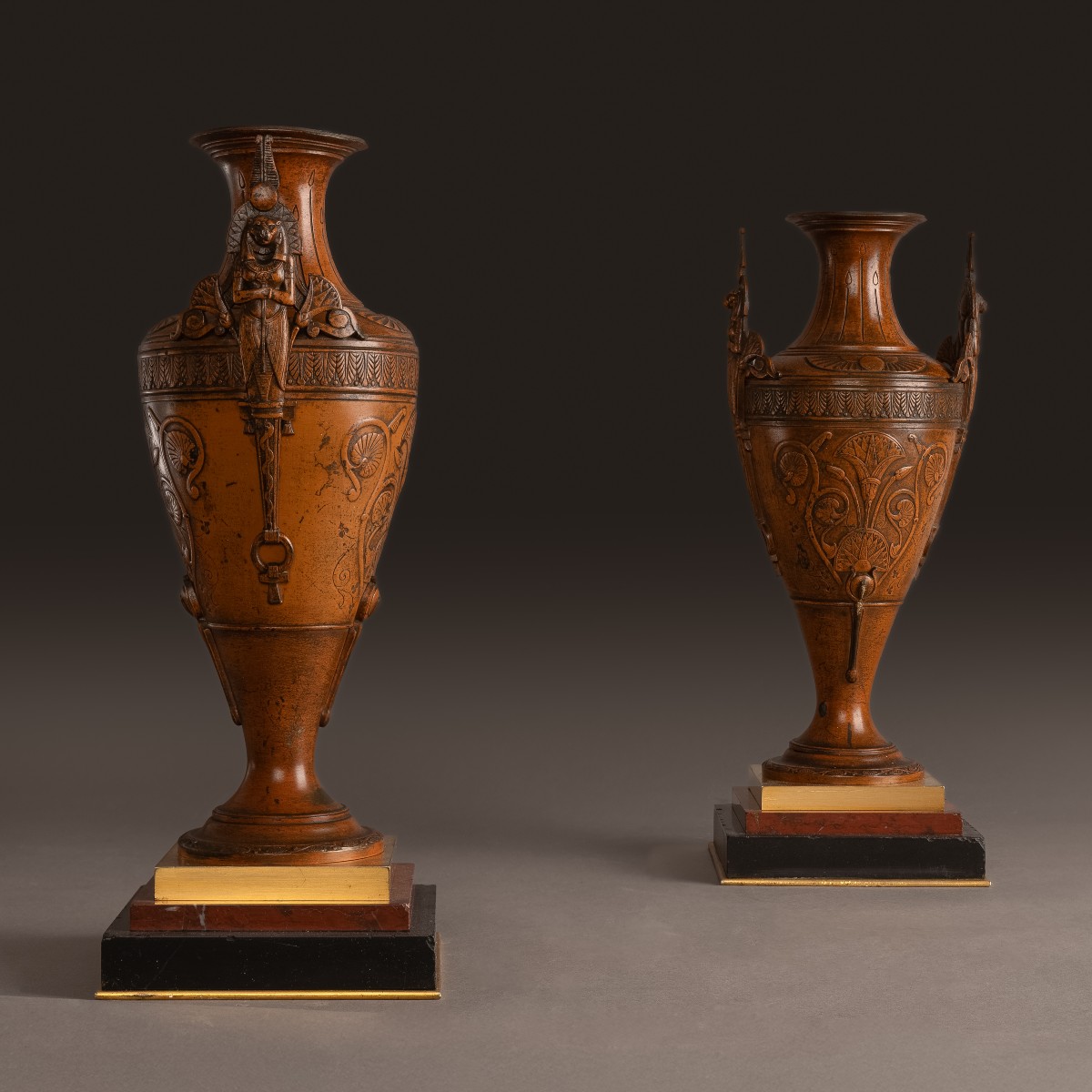

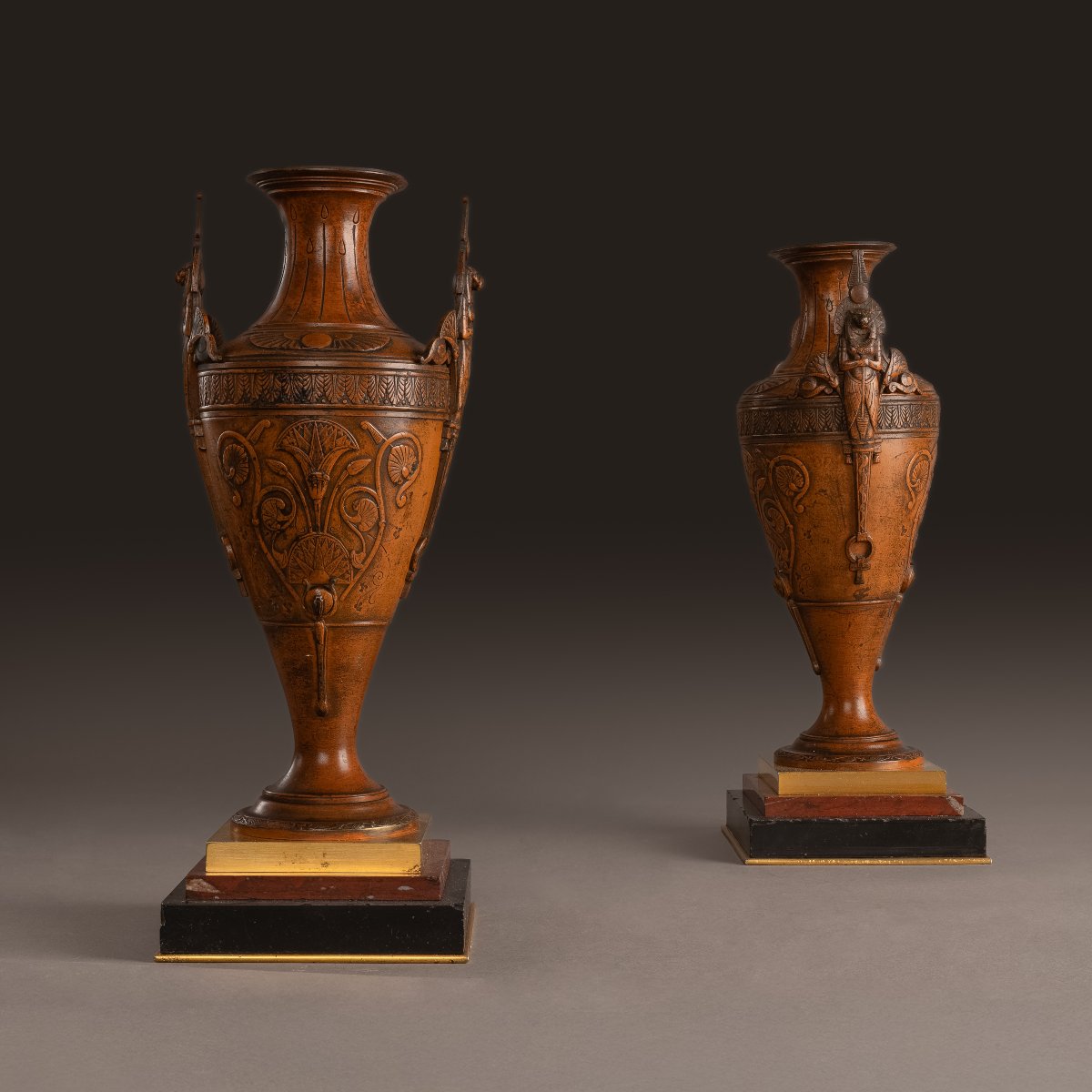
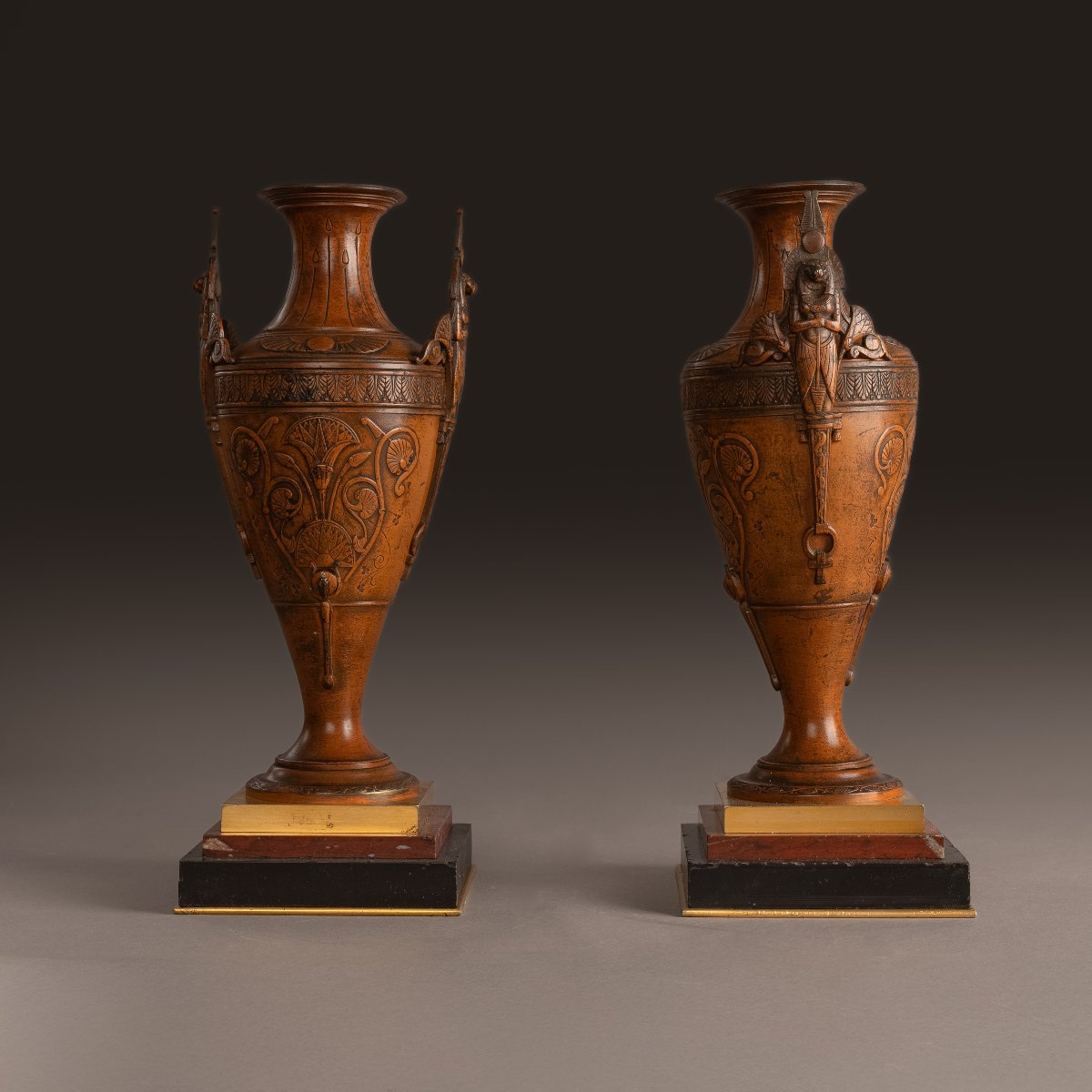
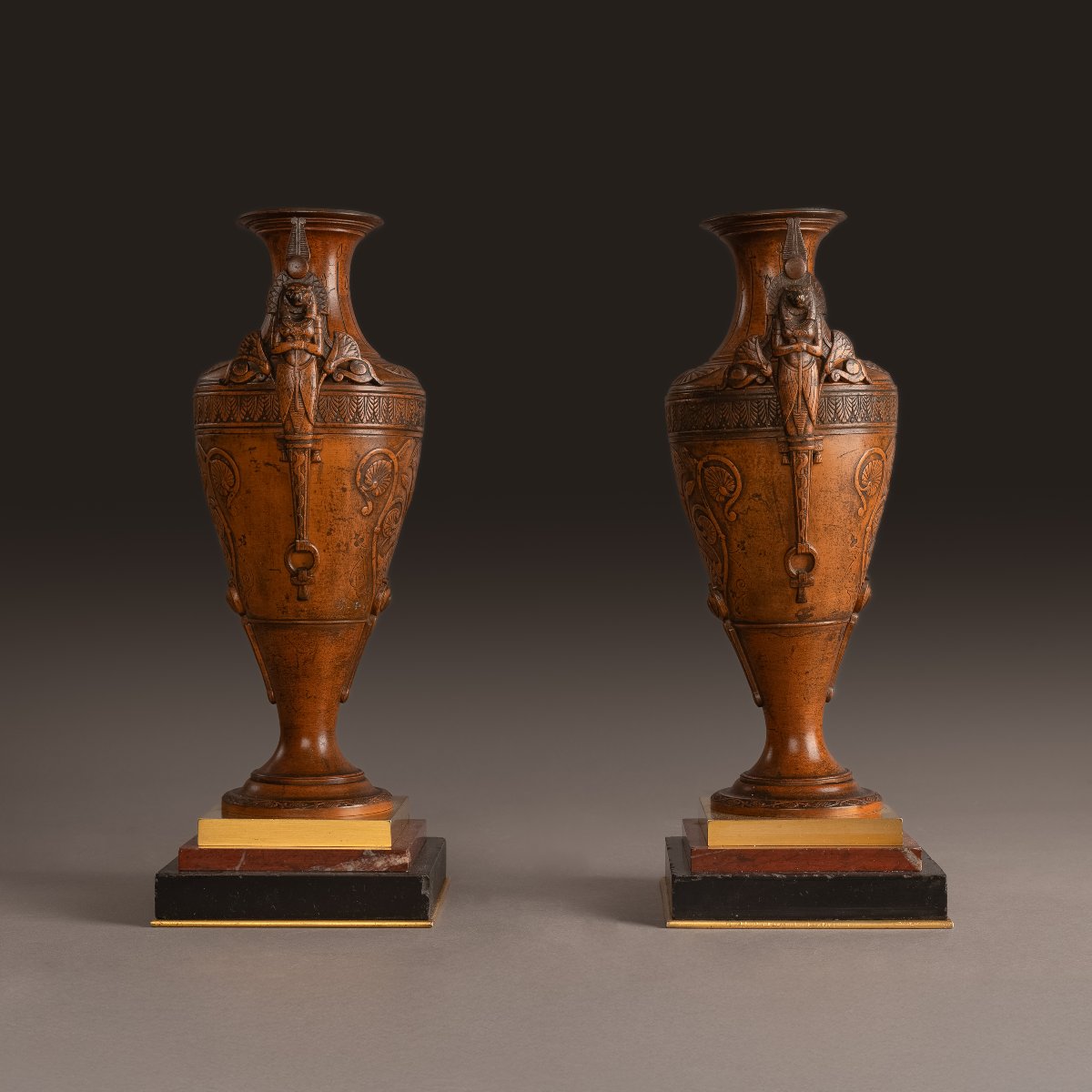
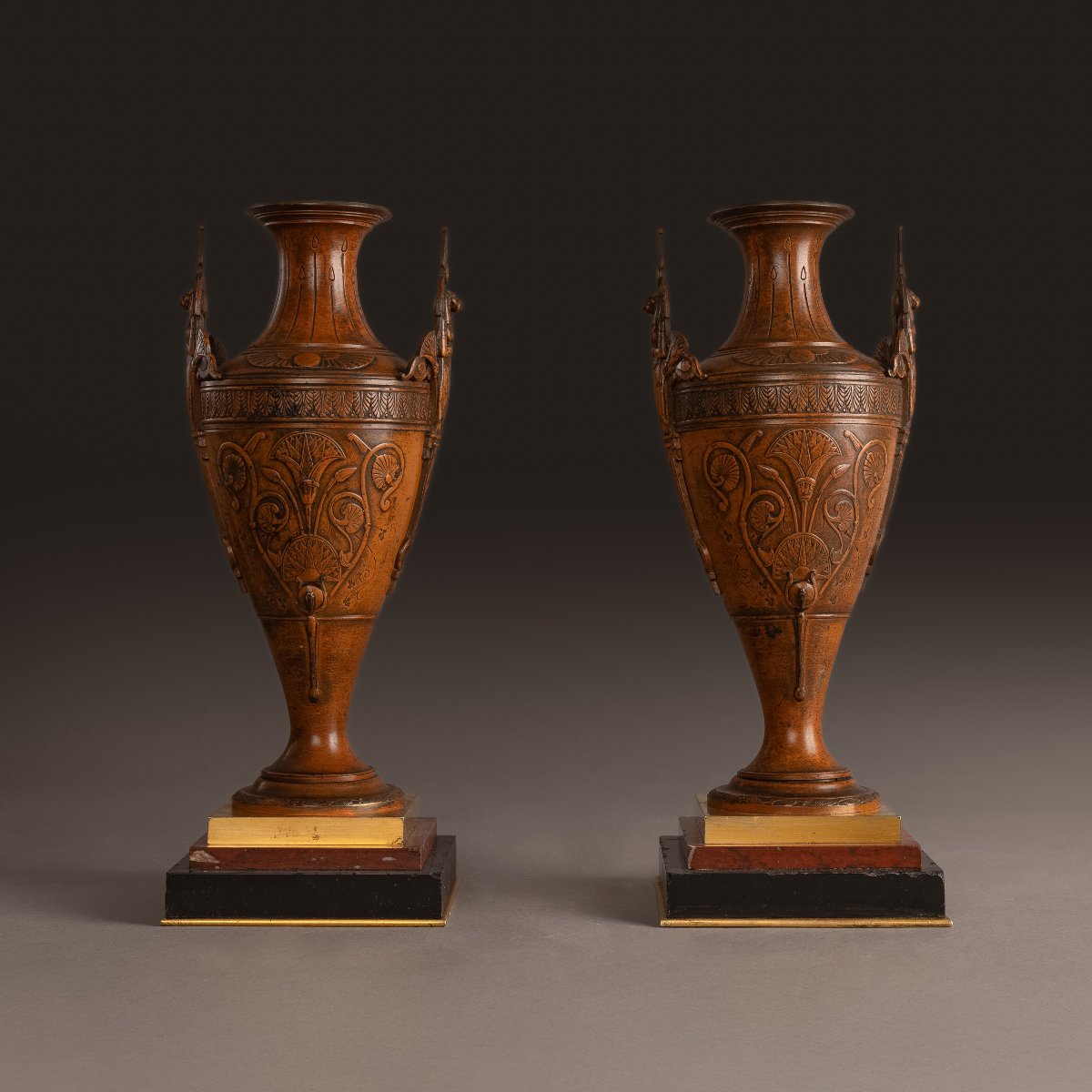
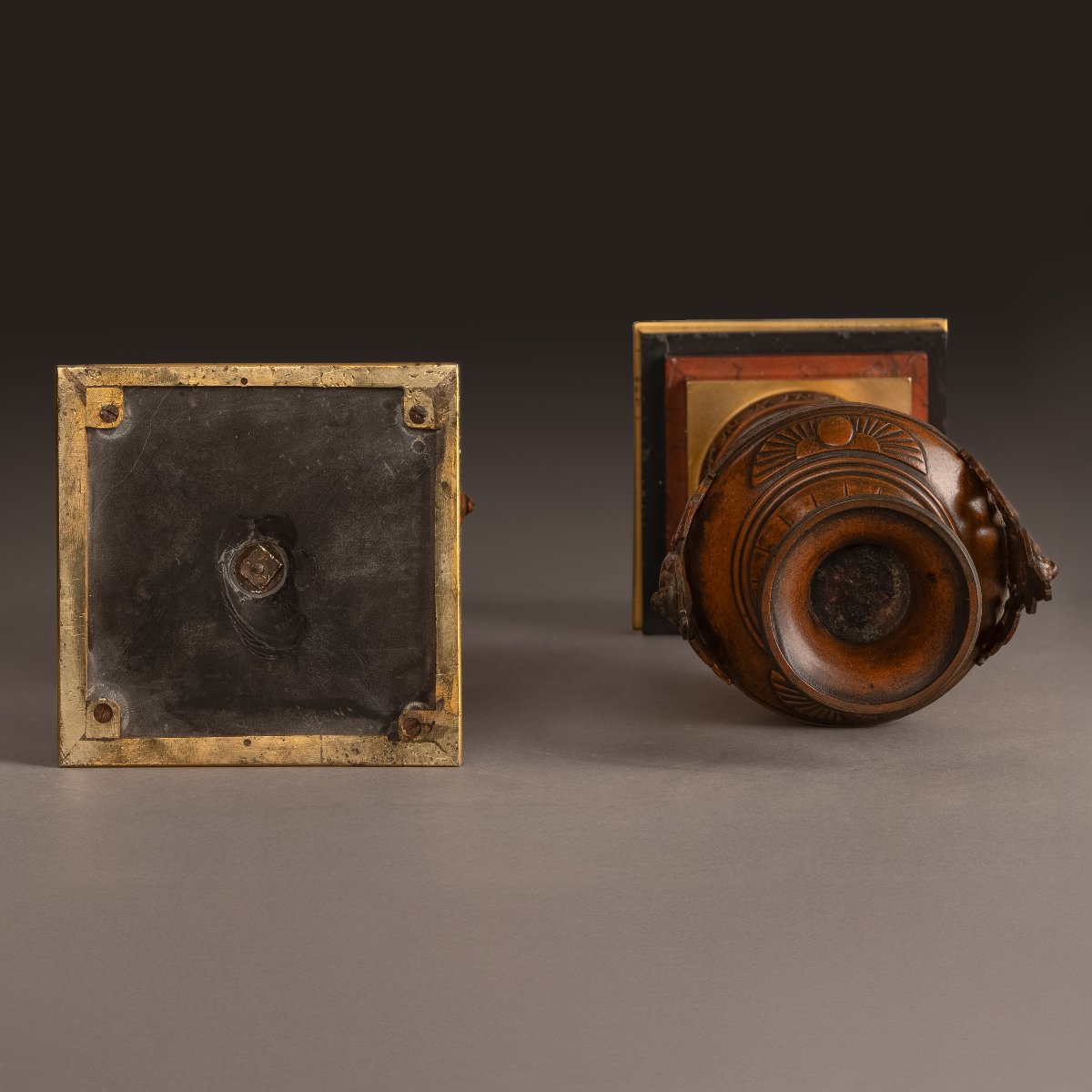
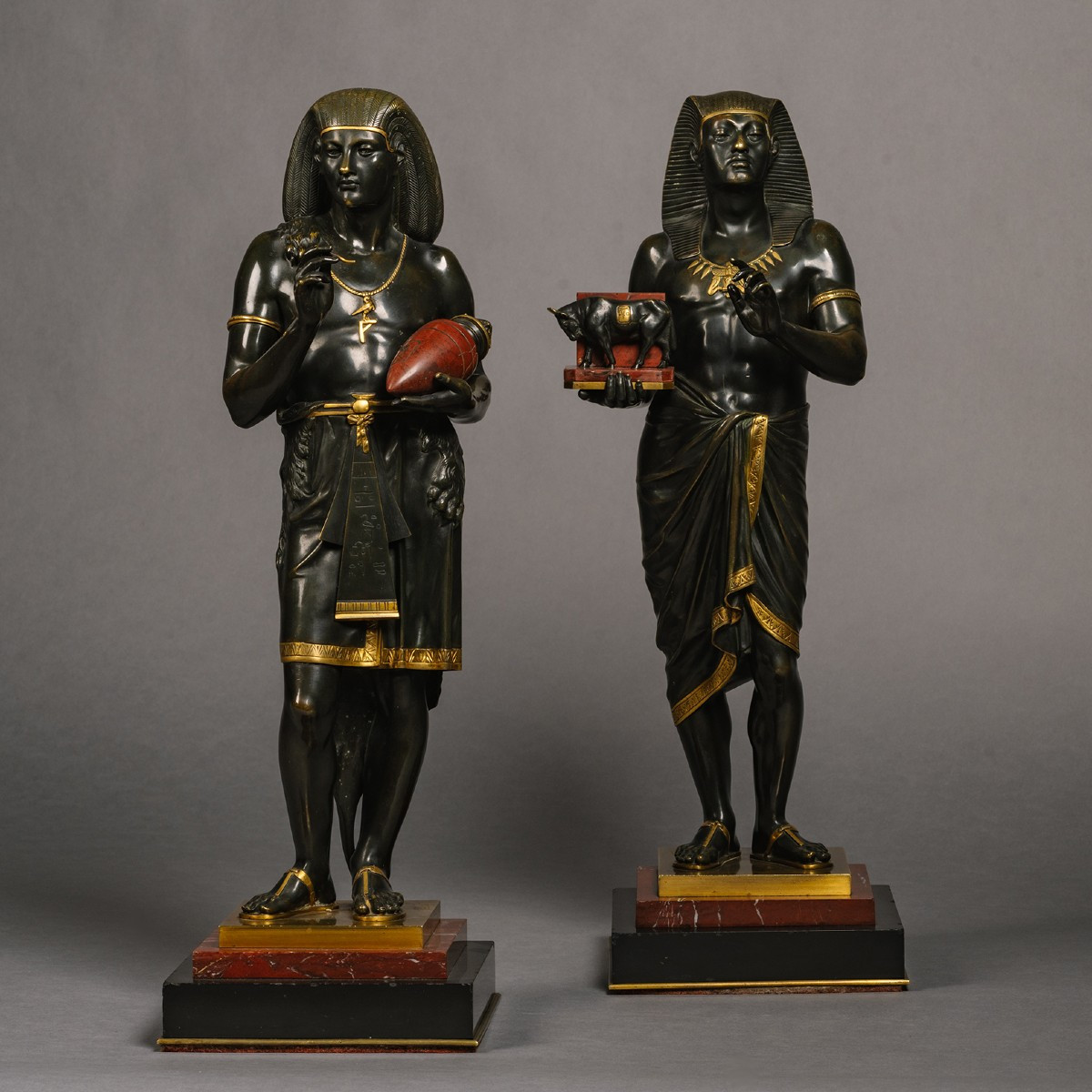
















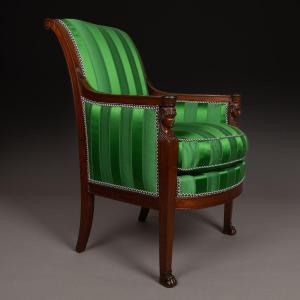









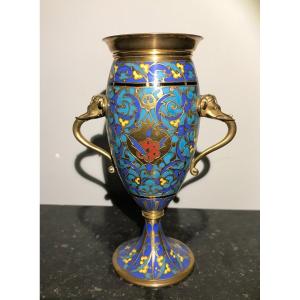
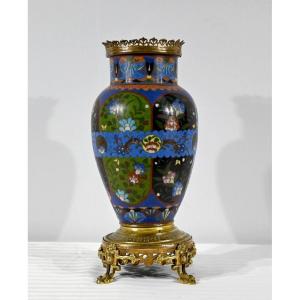
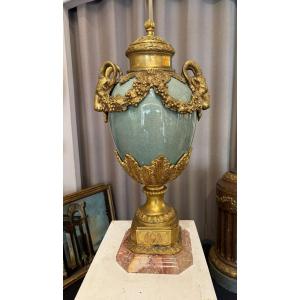



 Le Magazine de PROANTIC
Le Magazine de PROANTIC TRÉSORS Magazine
TRÉSORS Magazine Rivista Artiquariato
Rivista Artiquariato